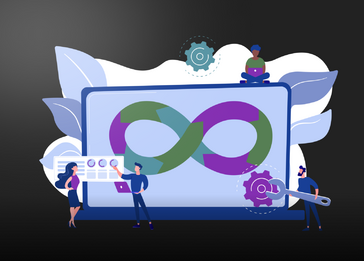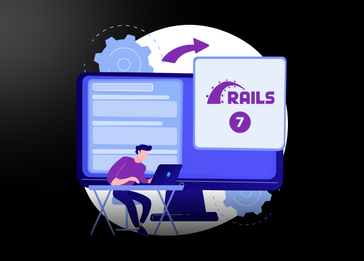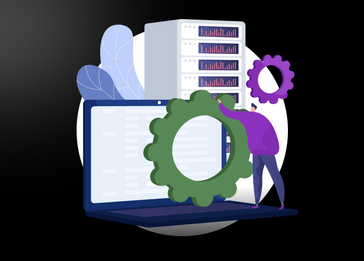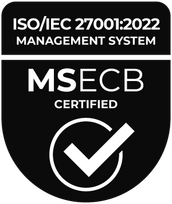“If I want to park my Mercedes in the middle of the highway, you need to make that happen,” a client told us after another long negotiation. We were discussing improving functionality and its potential impact on a platform used by 9 million users. The problem was that we definitely knew the client’s proposed solution wouldn’t do the job.
Most IT service companies are familiar with this common scenario: a client presents a pre-approved concept for a product and its development. The plan is expensive, it requires excessive resources, and making any changes to it is difficult. Or this scenario: we are in the middle of a project and the client requests changes way too late in the development process.
Regardless of the specifics, the end result is often the same: inefficient resource use and less-than-ideal user experiences.
In this article, we’ll explore how nurturing open communication and trusting relationships with experienced IT vendors can lead to better decisions from the start, reducing stress and friction at the finish.
Client Objective: Achieving Efficiency and Transparency in Product Delivery
Every business, irrespective of its location or sector, relies on IT to bring its vision to fruition. Over the past several years, our focus has been on partnering with the public sector, where the emphasis lies on digitizing individual services and establishing comprehensive platforms. The overarching goal is to ensure seamless access to services for both private and public stakeholders, minimizing manual intervention from department personnel to mitigate errors and delays.
One of the main challenges in this sphere is the fragmented nature of digitization efforts and the absence of integrated end-to-end processes. For instance, while requests for services like obtaining registry extracts are submitted electronically, the subsequent data processing often necessitates manual intervention across multiple databases. This disjointed approach leads to bottlenecks and lengthy delays within institutions, with the potential for errors at each stage.
Streamlining departmental workflows through digital end-to-end services also addresses another pressing need: enhancing transparency of government operations and services. Transparency is a key driver in the evolution of the public and municipal services market, fostering greater trust and loyalty among constituents.
Potential Challenges: Navigating Roadblocks
On the surface, the vendor’s task seems straightforward: propose an optimal solution and execute it flawlessly. Ideally, we aim to leverage effective tools and existing technologies to craft reliable, elegant solutions. However, reality often presents a more complex picture, with various additional factors coming into play.
Clients frequently grapple with limited budgets, stringent timelines, and potential resource shortages which can hinder their ability to embrace certain solutions. For government institutions, post-launch solution maintenance is crucial, necessitating access to specialists who can provide ongoing support. Availability of skilled personnel, both locally and globally, can significantly influence decision-making.
In our experience, we encountered a scenario where the current development stack perfectly aligned with the client’s needs, resulting in a successful solution that served them well for two years. However, challenges arose when sourcing specialized engineers locally became increasingly difficult for the client. Ultimately, they opted for an alternative stack, albeit with some associated complexities and the need for partial solution redevelopment, translating into additional time and costs.
Technical requirements mandated by institutional protocols or existing supplier contracts also pose significant considerations, particularly concerning backend technology stacks and system integrations. As a vendor, accommodating these constraints and aligning proposals accordingly, even if it deviates from the optimal path, is paramount to successful collaboration.
Start Talking Sooner for Smooth Sailing
Quality and swift information exchange are essential for seamless collaboration, both before kicking off and throughout the process. The sooner the client’s and vendor’s teams engage in dialogue, the smoother the integration of business processes with development.
Ideally, clients hash out projects and concepts with vendors upfront. However, clients often come in with pre-approved solutions or fail to communicate challenges, causing delays in decision-making or schedule changes.
We encountered a situation where the client failed to clearly communicate their plans for their platform’s final load volume and the significant increase in users after launching specific services. To put it into perspective, the final 20% of users accounted for a staggering 80% of the load. Suddenly, traffic surged, overwhelming our allocated capacity, and necessitating an urgent solution within hours. We had to resort to manual data import and transfer to keep the system running smoothly. All of this could have been prevented with advance communication to our technical team. The challenges of planning our team’s work under these circumstances are evident.
Golden Rules of Collaborative Work: 4 Keys to Success
Successful collaboration hinges on effective communication and mutual understanding between the vendor and client. Project, Deliver, and Account Managers must dedicate ample time and effort to foster this collaboration, as cutting corners in this regard is unacceptable. With a shared goal in mind, here are four essential keys to success:
- Understand Main and Local Goals: At the project’s outset, gaining clarity from the client regarding their overarching objectives is paramount. This sets the direction for the vendor team, ensuring alignment with the client’s vision. For instance, if load fluctuations were anticipated in the project referenced above, integrating load management into the system architecture from the start would have averted sudden disruptions.
- Build Future Perspectives: Detailed discussions between the client and vendor lay the groundwork for a comprehensive understanding of the project scope, road map, team composition, and necessary adjustments.
- Open Communication and Shared Responsibility: Early notification of any changes, no matter how significant, facilitates swift problem-solving with minimal resource wastage. Sharing responsibility between the client and vendor mitigates risks and prevents costly missteps. For instance, a client’s unilateral decision to switch backend solutions without consulting the vendor resulted in unforeseen limitations and unresolved issues.
- Find the “Golden Mean” and Prioritize Significance: Balancing conflicting business requirements requires compromise and dialogue. Whether it’s managing time constraints versus adding more features or design elements, finding common ground is essential. For instance, when faced with a strict deadline for launching a donation platform, prioritizing critical functionalities ensured timely delivery, with additional features gradually incorporated in subsequent iterations.
These principles underscore the importance of collaborative decision-making and adaptability in achieving project success while aligning with stakeholders’ interests and constraints.
Conclusion
A project can still succeed under unfavorable circumstances, but it won’t be a “win-win” for either the client or the team if they’re bogged down by preventable problems. True cooperation goes beyond task completion; it involves open communication and a shared design thinking culture. This approach keeps both sides motivated, saves money, and shortens the time to market.
Building such relationships is crucial and is an integral part of the manager’s and team’s work. Even if the client doesn’t initially see the value, they will eventually recognize its importance. This is something we’ve proven through years of successful collaboration.









